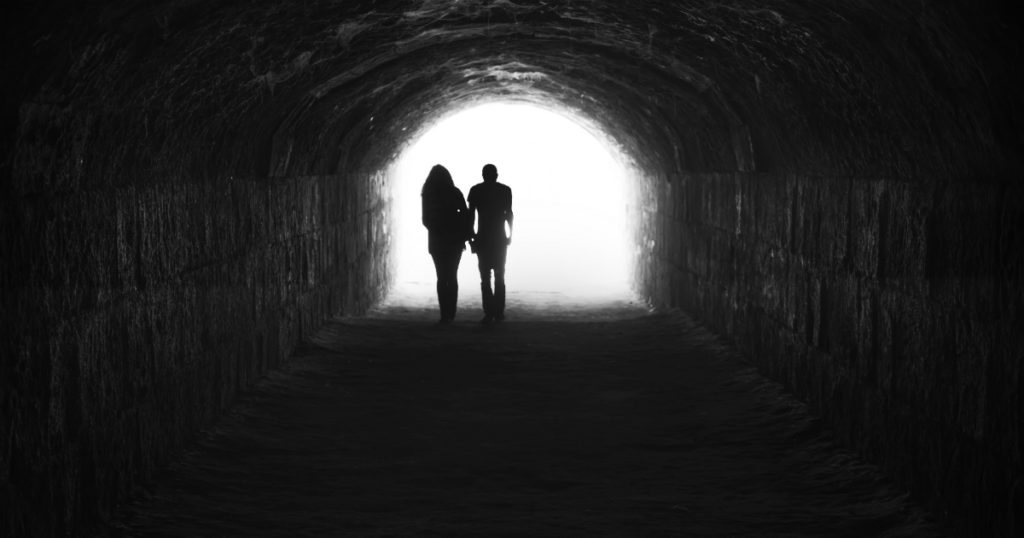
Contributor: Staff at Timberline Knolls Residential Treatment Center
You won’t hear the term “drunkorexia” used as an official diagnosis. Still, this term is problematic on a number of levels as it relates to behavioral health.
Drunkorexia, sometimes referred to as food and alcohol disturbance, is a pattern of behavior that essentially boils down to opting for alcohol over food when it comes to your calorie allowance.
It’s an especially popular phenomenon among the college-age crowd. Data presented at a conference in 2016 suggested that it occurred in more than 80% of young drinkers [1].
As its name may suggest, drunkorexia is generally connected with disordered eating habits. Some people may skip a meal before a night of drinking to offset the calories of alcohol. Others may induce vomiting after an evening out in an effort to avoid a hangover. Excessive exercise — either before or after drinking — is another common tactic.
But along with the traits of an eating disorder, drunkorexia has plenty of markers of alcohol use disorder. It’s easy to see why that combination would be especially dangerous on a college campus, where 53% of full-time students ages 18-22 regularly drink alcohol, and 33% engage in binge drinking [2].
Call Timberline Knolls for Help 855-630-2865
New research, though, may be able to pinpoint a pair of factors that could help identify those who are particularly at risk for drunkorexia.
Examining social comparison orientation
Erin Hill, an associate professor of psychology at West Chester University in Pennsylvania, conducted a study of 501 undergraduate psychology students, all of whom were at least 18 and had drunk alcohol at some point in the previous three months. The study asked participants to fill out a drunkorexia engagement scale by focusing on social comparison orientation, or the degree to which individuals compared themselves with others, as well as social norms.
The study found that the top predictor of drunkorexia engagement was a high eating disorder-related social comparison orientation, a finding that tracks with previous research. The second highest? Descriptive norms, or the perception of how often the behavior occurs [3].
“Drunkorexia seems to be linked to comparing oneself to others — particularly in relation to one’s body, eating, and exercise, and it is also related to social norms — and those who believed drunkorexia was common were more likely to engage in the behavior pattern,” Hill told PsyPost in March.
Hill noted that drunkorexia, like other forms of disordered eating, exists on a spectrum.
Both of these predictors should be considered in terms of intervention or prevention programs, though there was no evidence of a bidirectional relationship. It’s possible that higher social norms can lead to drunkorexia behavior and vice versa, but Hill stresses the need for more research outside of the college crowd to be able to apply these findings more broadly.
The addictive side of drunkorexia
Studies show that among people who have eating disorders, 50% abused alcohol or illicit drugs. Of those who have alcohol and drug dependency, up to 35% have a diagnosable eating disorder — a rate that’s 11 times higher than that of the general population [4].
At its root, drunkorexia is a disordered eating behavior, but combining it with binge drinking habits certainly heightens the risk for significant long-term medical complications. Drunkorexia can trigger or further embed an existing eating disorder, and, for some, it could lead to alcohol dependency.
“It’s a common pattern of behavior that we see with patients going through this self-harm behavior,” addiction therapist Dee Johnson told Cosmopolitan UK in March [5]. “It’s always a subtle start, and it never feels like harmful behavior at the beginning — hence its subtlety is so dangerous.
 “As with any addiction, or other form of self-harm, tolerance levels change, and there becomes, over time, a need to keep increasing the behavior to try and achieve that original desired effect. Our bodies adapt to the level of alcohol we consume, so we need more and more. And the obsession to look or feel a certain way increases. The perspective of reality is lost, driving this harmful behavior ever deeper.”
“As with any addiction, or other form of self-harm, tolerance levels change, and there becomes, over time, a need to keep increasing the behavior to try and achieve that original desired effect. Our bodies adapt to the level of alcohol we consume, so we need more and more. And the obsession to look or feel a certain way increases. The perspective of reality is lost, driving this harmful behavior ever deeper.”
Finding the right level of support
Drunkorexia is not a medically diagnosable disorder, and the presence of both an eating disorder and alcohol use disorder symptoms warrants treatment for both.
It’s important to identify those at risk, such as college students and those who spend a lot of time on certain social media platforms where the social comparison behaviors noted in the West Chester University study tend to run rampant.
Outcomes of drunkorexia when people don’t pursue treatment can vary greatly from poor academic performance and unsafe sexual practices to criminal activity and long-term physical health concerns.
If you know someone who is exhibiting behaviors related to drunkorexia, don’t be afraid to have a conversation. By steering them toward a treatment center that has experience treating both eating disorders and alcohol use disorder, you may be able to help them get their life back on track.
References:
[1] Castillo, W. (2016, June 30). Study: 80% of college students engage in ‘drunkorexia.’ USA Today. https://www.usatoday.com/story/college/2016/06/30/study-80-of-college-students-engage-in-drunkorexia/37419151/.
[2] College Drinking. (October 2021). National Institute on Alcohol Abuse and Alcoholism. https://www.niaaa.nih.gov/publications/brochures-and-fact-sheets/college-drinking.
[3] Manis, E. (2022, March 13). New study identifies two risk factors related to drunkorexia. PsyPost. https://www.psypost.org/2022/03/new-study-identifies-two-risk-factors-related-to-drunkorexia-62720.
[4] Reed, S. (2022, March 7). Eating disorders and alcoholism: 41% of people with ED have an addiction. Alcoholics Anonymous. https://alcoholicsanonymous.com/mental-health/alcoholism-and-eating-disorders/.
[5] Biggs, J. (2022, March 30). Everything you need to know about ‘drunkorexia’ — aka ‘saving’ calories to drink alcohol. Cosmopolitan UK. https://www.cosmopolitan.com/uk/body/health/a39559842/drunkorexia/.
About Our Sponsor:
 At Timberline Knolls Residential Treatment Center, located outside of Chicago, Illinois, we provide specialized care for women and girls who are living with mental health conditions such as substance use disorders and eating disorders. Our private facility offers female-only treatment programs for eating disorders, addiction, and a range of mental health conditions. We work closely with each person to develop treatment goals to maximize strengths while focusing on individual needs. Our treatment team understands that each woman has unique needs and that she must play a role in her journey to wellness.
At Timberline Knolls Residential Treatment Center, located outside of Chicago, Illinois, we provide specialized care for women and girls who are living with mental health conditions such as substance use disorders and eating disorders. Our private facility offers female-only treatment programs for eating disorders, addiction, and a range of mental health conditions. We work closely with each person to develop treatment goals to maximize strengths while focusing on individual needs. Our treatment team understands that each woman has unique needs and that she must play a role in her journey to wellness.
The opinions and views of our guest contributors are shared to provide a broad perspective of addictions. These are not necessarily the views of Addiction Hope, but an effort to offer a discussion of various issues by different concerned individuals.
We at Addiction Hope understand that addictions result from multiple physical, emotional, environmental, and genetic factors. If you or a loved one are suffering from an addiction, please know that there is hope for you, and seek immediate professional help.
Published on July 7, 2022
Reviewed by Jacquelyn Ekern, MS, LPC on July 7, 2022
Published on AddictionHope.com

